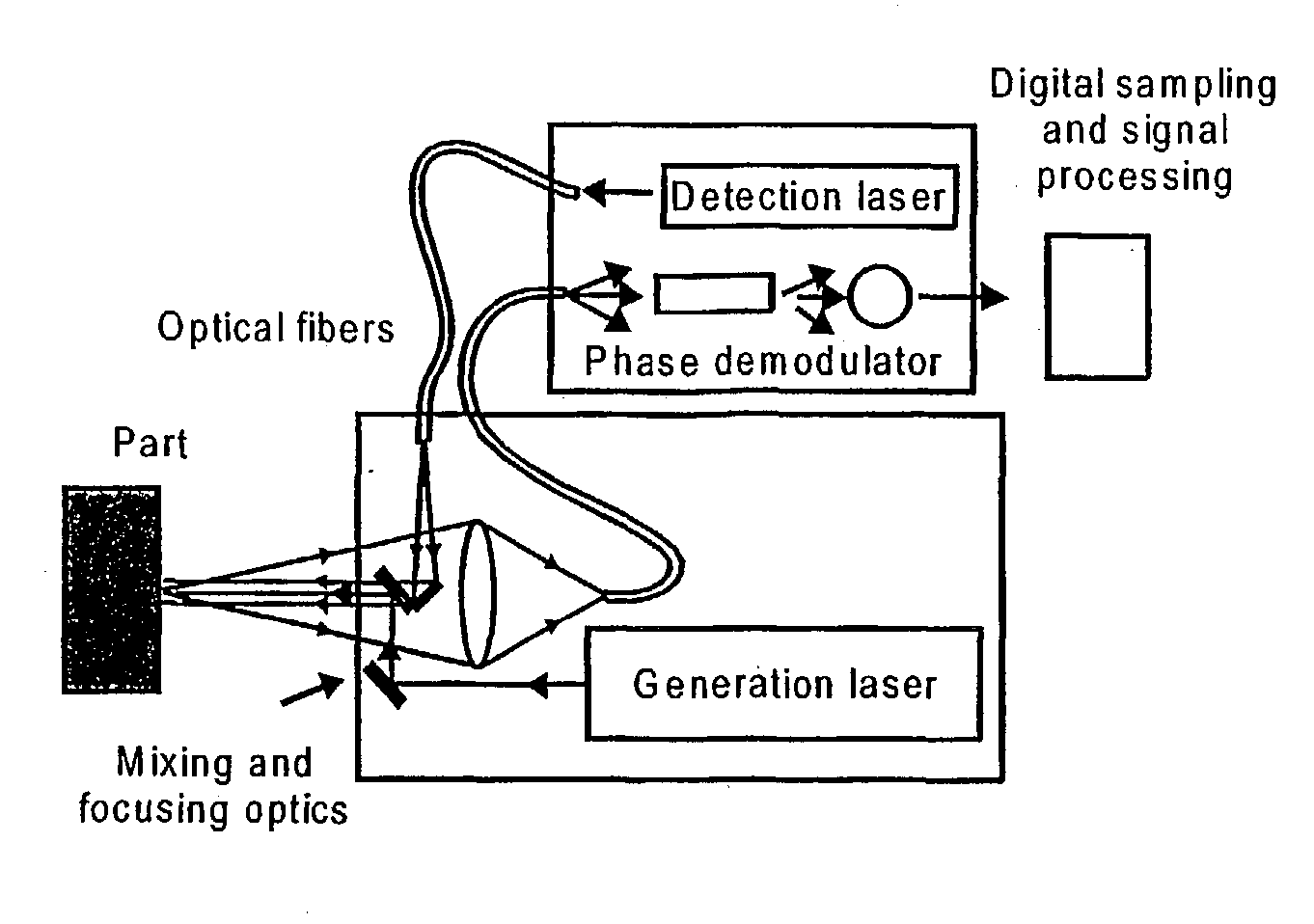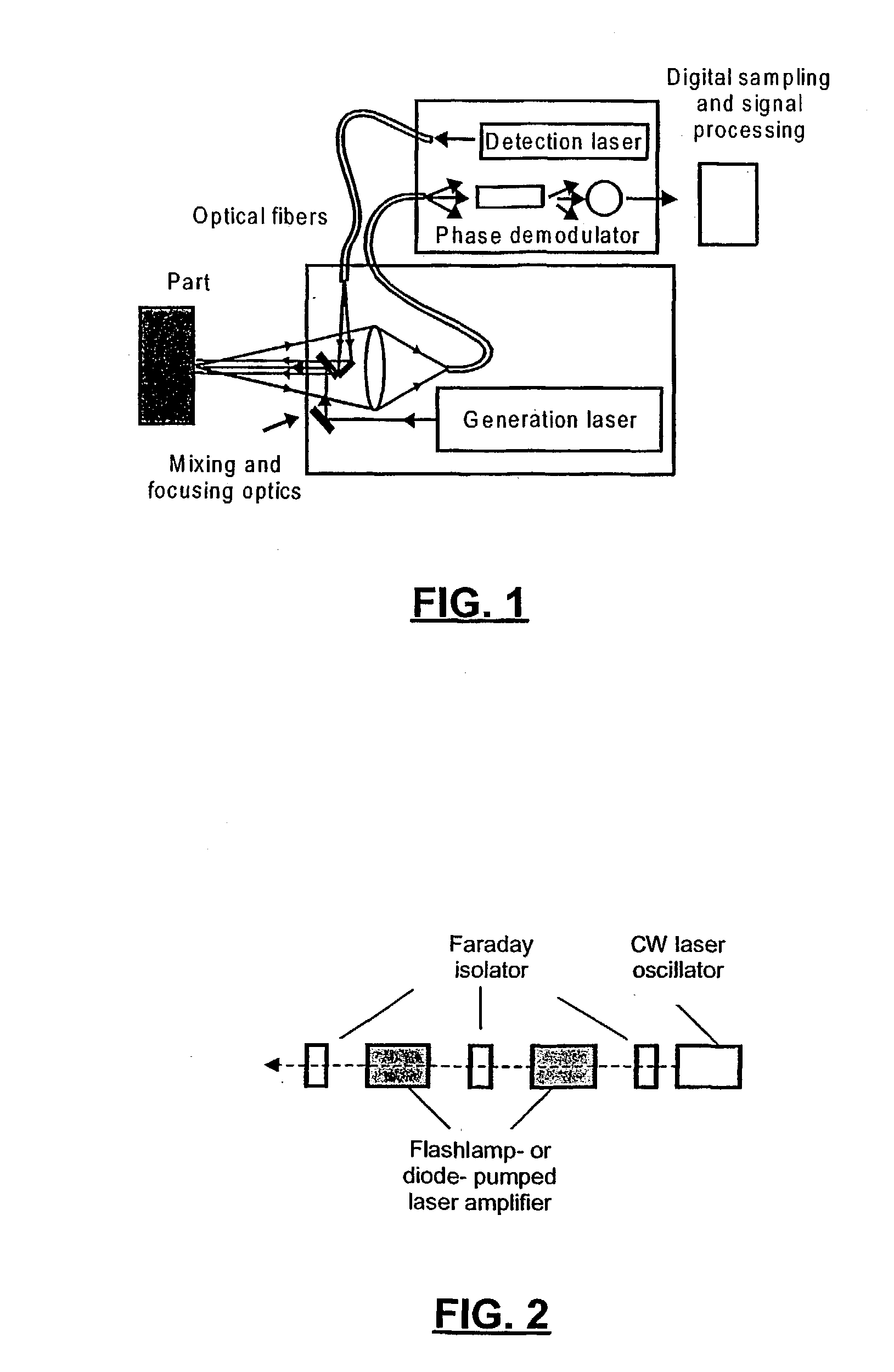Laser -ultrasonic testing system
a technology of ultrasonic testing and laser, which is applied in the field of material testing, can solve the problems of not ensuring that the technique is sufficiently sensitive, material damage, and often only milliwatts at the interferometer level of kilowatt peak power
- Summary
- Abstract
- Description
- Claims
- Application Information
AI Technical Summary
Problems solved by technology
Method used
Image
Examples
first embodiment
[0028] this invention is shown in FIG. 4. This embodiment is composed of a long pulse laser oscillator 10 and a two-wave mixing phase demodulator 12. The cavity of the laser oscillator is composed of a mirror 14, an output coupler 16 and a laser head 18, which contains the lasing medium and intra-cavity elements. The laser medium is preferably a solid-state laser medium, such as Nd-YAG, but gas or liquid can also be used. The solid-state laser medium has the shape of a rod, a disk or a slab, and is pumped by a flashlamp or laser diodes (the pumping means is not represented in FIG. 4).
[0029] A diaphragm 20 is inserted in the laser cavity to select the fundamental T.sub.00 laser cavity mode. Two quarter-wave plates, one on each side of the laser medium, are used to reduce the spatial hole burning, resulting in more competition between the modes that could oscillate and higher gain. These two quarter-wave plates also act as a rough mode selector. A glass plate 24 at Brewster angle or a...
third embodiment
[0044] The third embodiment shown in FIG. 10 is obtained by combining two lasers pumped by the same flashlamp. One laser is the detection pulsed laser oscillator as previously described. The second laser 60 is a standard high power, Q-switched laser and is used for the generation of ultrasound. The generation laser cavity is composed of a mirror 62, and output coupler 64, a Q-switch cell 66, a quarter-wave plate 68 and a polarizer 70.
[0045] The output of this laser is sent to the object or workpiece to generate ultrasound that is detected by the detection laser associated with a suitable demodulator such as the two-wave mixing setup described above. The opening of the Q-switch cell is timed in such a way that the time when ultrasound is detected corresponds to the zone where the relaxation oscillations of the detection pulsed laser oscillator have been damped out and noise is minimum. Alternatively, a very simple system can be made by using a single laser slab medium pumped by a fla...
PUM
 Login to View More
Login to View More Abstract
Description
Claims
Application Information
 Login to View More
Login to View More - R&D
- Intellectual Property
- Life Sciences
- Materials
- Tech Scout
- Unparalleled Data Quality
- Higher Quality Content
- 60% Fewer Hallucinations
Browse by: Latest US Patents, China's latest patents, Technical Efficacy Thesaurus, Application Domain, Technology Topic, Popular Technical Reports.
© 2025 PatSnap. All rights reserved.Legal|Privacy policy|Modern Slavery Act Transparency Statement|Sitemap|About US| Contact US: help@patsnap.com



